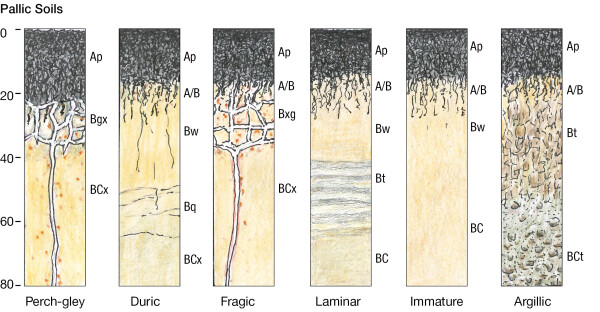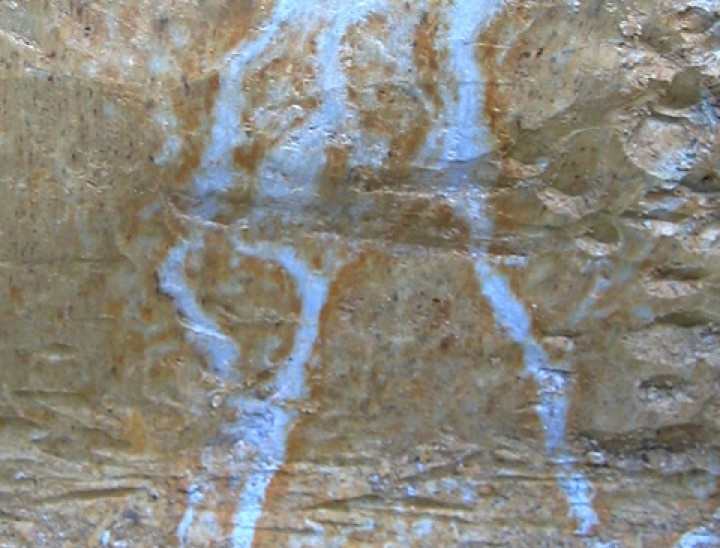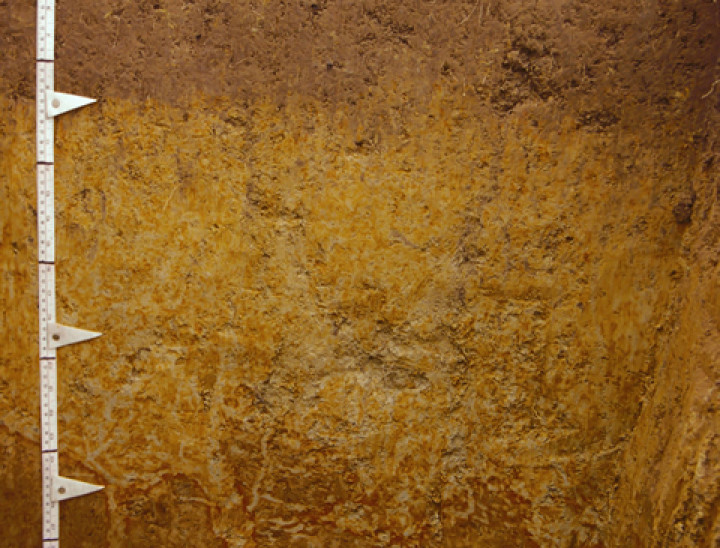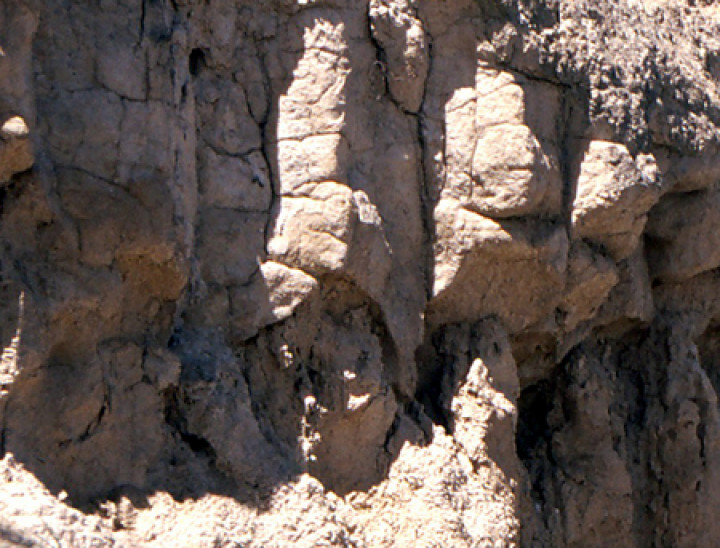Pallic Soils [P]
A cubic metre of some subsoils can weigh more than 1.8 tonnes
Pallic Soils have pale coloured subsoils, due to low contents of iron oxides. The soils have weak structure and high density in subsurface horizons. Pallic Soils are dry in summer and wet in winter
Occurrence
Pallic Soils occur predominantly in the seasonally dry eastern part of the North and South Islands, and in the Manawatu. Parent materials are commonly loess derived from schist or greywacke. They cover 12% of New Zealand.
Physical properties
Soils have slow permeability with limited rooting depth, and medium to high bulk density. They are susceptible to erosion because of high potential for slaking and dispersion.
Chemical properties
Soils have medium to high nutrient content ( except for sulphur), high base saturation, low concentrations of secondary oxides, and low organic matter contents.
Biological properties
Soils are strongly worm-mixed, at the boundary of the A and B horizons.
Soil groups
Soil orders are divided into soil groups based on variation in factors such as drainage status, parent material, chemical and physical properties:
- [PP] Perch-gley Pallic Soils — periodic wetness caused by a perched water table
- [PU] Duric Pallic Soils — silica-cemented pan in the subsoil
- [PX] Fragic Pallic Soils — a compact pan in the subsoil
- [PL] Laminar Pallic Soils — clay accumulation as thin subsoil bands
- [PJ] Argillic Pallic Soils — clay accumulation as thin coatings on peds or in pores
- [PI] Immature Pallic Soils — weakly expressed Pallic soil features



